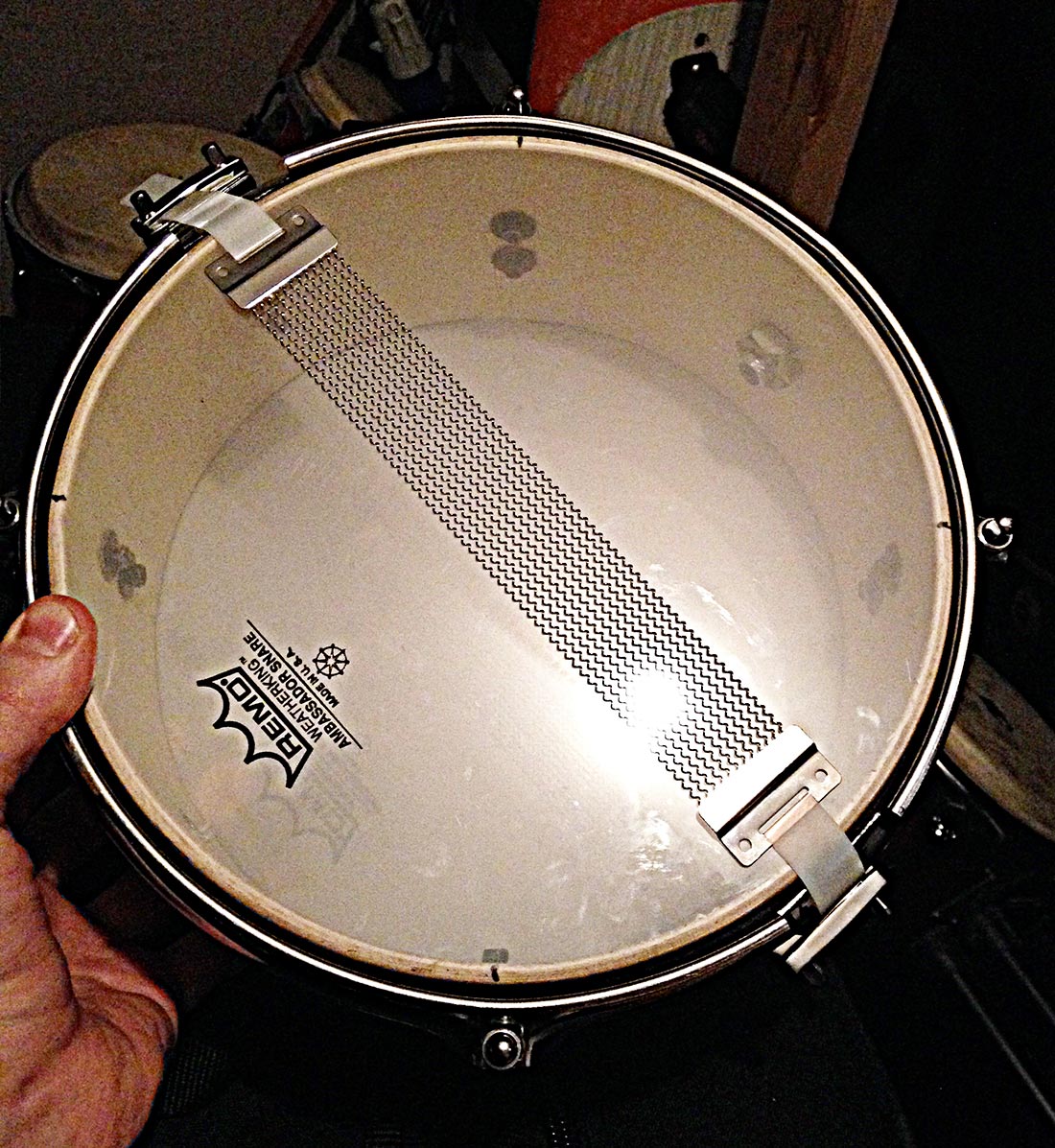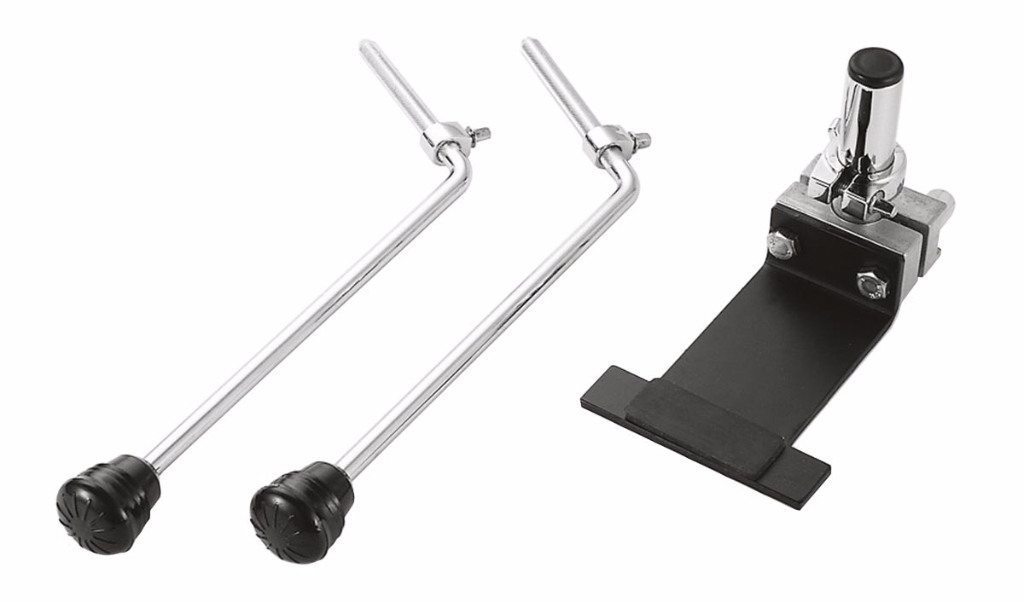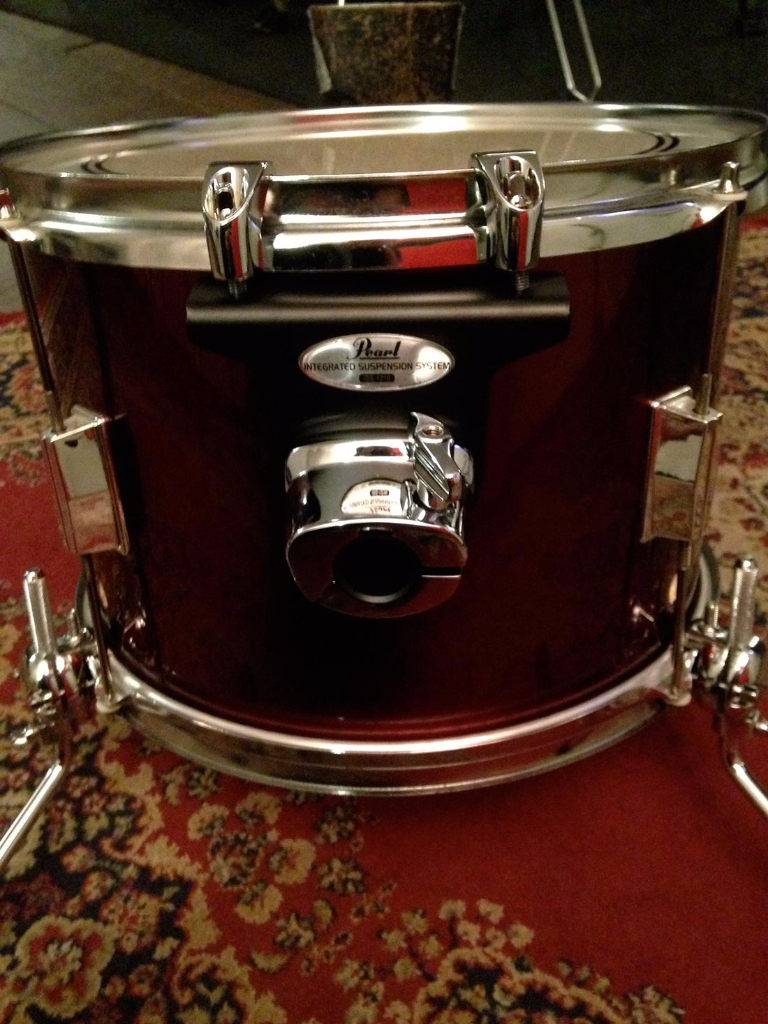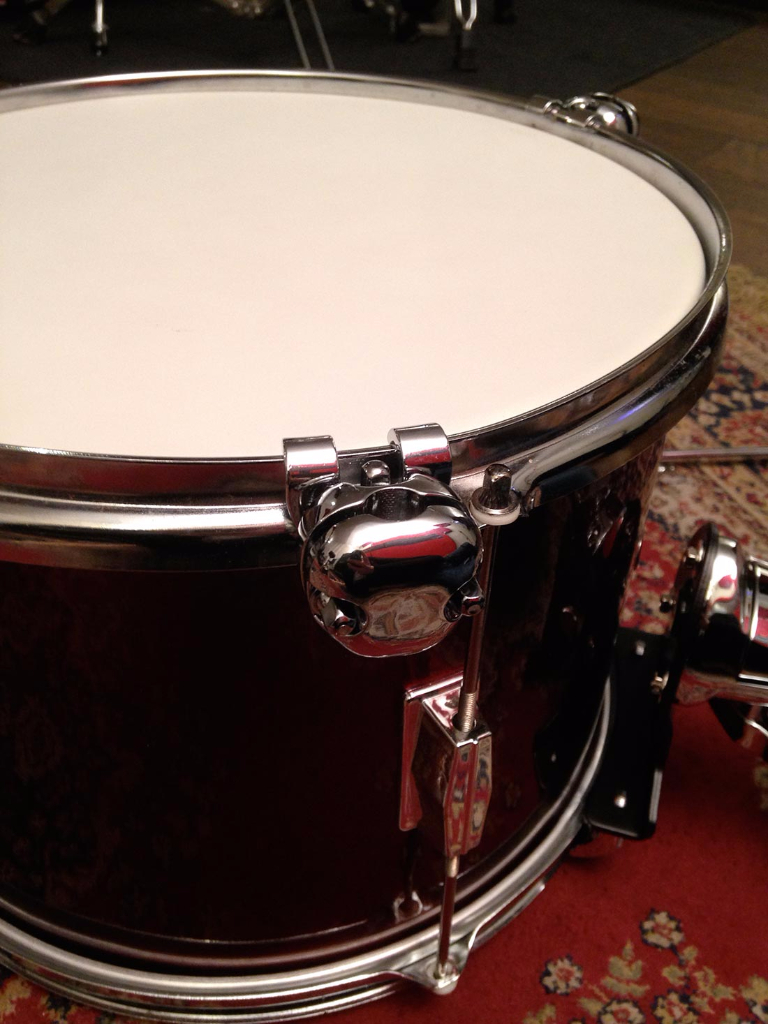How to make a ‘Club Drum Kit’
Various drum manufacturers are providing smaller ‘Club’ sized kits these days. Prices range from £400.00-£1,100.00, so you could try making your own. Below are some tips on helping you create your very own workable ‘Club Drum Kit.’ If you don’t have any spare drums lying around or want to change up your main kit, you could get yourself a children’s drum kit.
Get Yourself a Children’s Drum Kit
Get yourself a children’s drum kit. Once in a shopping centre, my attention was drawn onto a small drum kit perched in the window of the ELC shop. Seeing that the price was only £60.00 I purchased it sharpish and used it for a gig that evening – if anything, as NOT to use the ‘cajon’ option. Needless to say, this little stunt worked, the gig went without a hitch and this children’s drum kit/set has been a steady work horse kit for over 10 years; especially for the smaller venue gigs.
Unsure of the brand, it became known as ‘Hercules’ and the sizes are:
- 13″ Kick Drum,
- 8″ Rack Tom and
- 10″ Snare.

Even though it was usable in it’s original state, it was only fitting to spend more money on improving it.
Add Some Additional Features/Hardware to the Drum Kit.
Understandably the hardware and features on this type of kit/set were basic & flimsy to say the least. Therefore extra pieces of hardware were needed such as; snare stand, hi hat stand, cymbal stand and stool.
N.B. you’ll want keep it light weight and easily transportable so best keep stands to a minimum.
Furthermore, getting a folding luggage trolley for transporting the drum set is advised. You can pick one up for £12.99-£20.00.
Customise
In order to customise the kit, you may want to add better lugs on the snare to help with the tuning of both heads. In my case, (4x) the Pearl CL-05 mini classic lugs (£8.00 each) with a set of Stagg 4F-HP tension roads (£2.85) sufficed.

Also, adding the Pearl throw off SR-018 (£25.00), the Pearl S-032N 10″ snare wires – 12-strand (£10.00) helped.


N.B. 2x rectangular shapes had to be filed out of the bottom hoop in order for the snare wires to rest properly against the skin.
Moving onto the kick drum. The pedal included with the kit was not designed for heavy playing by an adult and was falling apart at gigs. As a result, raising the kick drum to accommodate a regular kick pedal was the only option.
So, Pearl’s lifter set was ideal. It includes:
- JG-16 jungle set adapter,
- 2x bass drum legs (£25.69)

AND Pearl’s ISS1216/C tom suspension system (£22.00).

Furthermore, it was completed with (2x) the Gibraltar / Dunnett Universal Hoop Clamps (£19.99 each) – needed to attach the bass drum legs to the hoop.

Add Some Quality Drumheads
When you add some quality drum heads, you can make most drum kits sound great. Personally, my choice of drum heads are Remo drumheads and re-fitting the whole kit cost under £62.00!

The End Result
So, if we do the maths the end result is –
- Drum kit £60.00
- Trolley £12.99
- Lugs & T.Rods £50.85
- Snare extras £35.00
- Kick extras £87.67
- Drum heads £62.00
- P&P £20.00
Total £328.51
Not a bad price for a ‘Club Drum Kit’ . Admittedly the drum kit was purchased over 10 years ago and moreover, the improvements/add ons were made over time – not all in one go. Furthermore, already owning spare hardware, there wasn’t a need to spend any extra than required.
Incidentally, using (mainly) the Pearl additions doesn’t mean there aren’t other brands on the market and/or cheaper alternatives. You can find all kinds of manufacturers offering add-ons these days. Nothing a bit of research won’t find out.
In Conclusion
In conclusion, this children’s drum kit has giving me a lot of mileage and it has more than paid for itself from all of the gigging. It’s easily transportable and on those smaller ‘Club’ gigs, especially if you don’t want to use a cajon. You can make up your own club kit out of; a floor Tom, a small tom and a snare and with the add-ons mentioned above. Try it and see.
Yes the children’s drum kit is limited in that it’s a small drum kit and acoustically may not stand up to loud amp’s or PA’s. However, acoustically or mic’d up, you’ll be surprised at what a passable drum kit sound you’ll get. In fact, some of my bands forget ‘Hercules’ is being used!
Have you created your own ‘Club Drum Kit’ or something similar?
Let me know and leave a comment in the comments section.

8 Comments
Join the discussion and tell us your opinion.
Interesting stuff! You’ve definitely got me thinking. I’ve been toying with the idea of replacing Bess (my old monster rock kit) with something a little more flexible, so perhaps 20, 10, 12, 14ft, 16ft so I can say just take the 10 and the 14 to small gigs but this is another level. I’ve been avoiding the cajon solution for various reasons, not least of which is I’d like a cymbal and don’t fancy clouting one with my hand. Saying that I know a lad who does just that but he’s about 20 so is harder than me ;-). How difficult/nerve wracking is drilling holes in drums? Do you use lighter sticks or is Hercules quiet enough?
Hey Ash, yeah drilling holes was a little bit nerve wracking but luckily there was only 4 areas to drill so I just went for it. Filing down the hoop was the most time consuming. As for sticks, I still use 5Bs which seems to work fine.
I had very similar experiences converting a children’s kit for adult use. The snare upgrades are good advice. I didn’t touch mine and simply grew to love the sloppy buzzy sound of a cheap snare. My kit had a 16″ bass. It was actually functonal as manufactured. The pedal was crap but a 70’s Ludwig Speed King with its Spartan eloquence worked like a charm. I also managed with the factory snare stand and hi-hat after a little beefing up of the spring to lift a real 14″ cymbal set. The most necessary mod was to the tom mount. I had to add a block of wood inside the kick shell to make better anchorage for the fasteners and distribute the shock over more of the flimsey 5 ply shell. These types of kit are surprisingly fun to play. The low price is just a bonus.
Thanks Matt.
Hey Ben, good, informative article! From a sonic perspective, the sound of a kit this size has never appealed to me. Maybe do a follow up blog incorporating electronic triggers to get a more versatile sound. The Toland tm-2 trigger module omes to mind for example. 🙂
Cheers Ed, TM-2 triggers eh? I’ll have to check them out sometime!
When Ben is playing with this kit at smaller KingTastic gigs I forget it’s a small kit. He makes it sing. It’s a great talking point for the audience at gigs too. Combined with my Fender Pro Jr we might be the smallest band with the biggest sound…
Ben likes this.